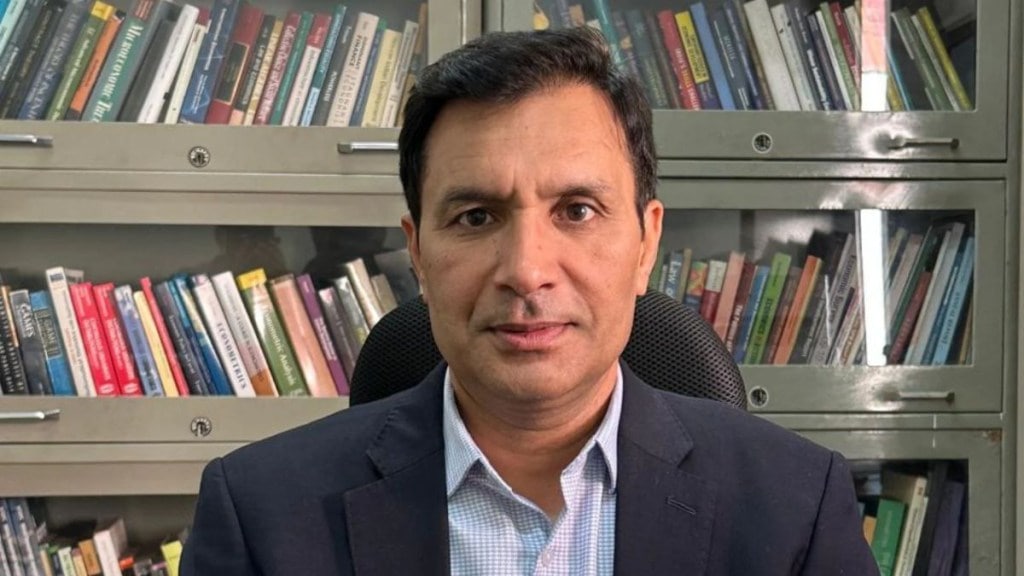Ram Singh, director and professor at Delhi School of Economics and member of the Reserve Bank of India’s (RBI) monetary policy committee, believes that benign inflation and signs of private investment recovery support further easing. However, he tells Kshipra Petkar that global headwinds and external volatility temper the scope for aggressive rate action. Excerpts:
You’ve supported a shift to an accommodative stance. What specific growth signals or investment trends would validate a follow-up rate cut?
The inflation outlook is benign. Any growth stress would strengthen the case for further rate cuts, ceteris paribus. Private investment is key to growth momentum — several indicators point to a pickup, supported by fiscal measures, accommodative conditions, and transmission of the 100-bps cut. SCBs and NBFCs show robust financials, and non-bank fund flows to corporates have risen. Manufacturing PMI hit a 17.5-year high of 59.3; services PMI reached 62.9, a 15-year high. These are encouraging, but we need more data to be sure on the private capex front. There’s room for further monetary support.
Given your view that the inflation trajectory is benign, what conditions would prompt you to advocate a rate cut in the next MPC cycle?
Any signs of stress on growth and private investment would further strengthen the case for additional rate cuts. Besides, while deciding on the time and quantum of cut, we have to factor in developments on the external front – exports, exchange rate and capital inflows. However, given the high degree of uncertainty, it isn’t easy to provide any forward guidance on this count.
Where do you see the terminal rate at this point in this easing cycle? Do you see the scope for more than one rate cut?
Headline inflation fell to an 8-year low of 1.54% in September, with October tracking between 0.2% and 0.6%. WPI has eased to 0.13%. While low inflation supports rate cuts, it’s not ideal for businesses or public finances. Market estimates for FY26 and FY27 are below RBI’s projections — closer to 2% vs 2.6% for FY26, and 3.7–3.9% vs 4.5% for FY27. If RBI’s forecast aligns with these, it could open room for more than one cut. That said, external uncertainties make it hard to gauge the extent.
Do you see any structural shift in food price dynamics that could anchor inflation below target for a longer period?
It seems the food price volatility has come down in recent years. Partly, this is a consequence of favourable weather conditions in the past. The improvements in transport infrastructure, storage capacity and growth of the food processing industry have also played a role in reducing the wastage of fruits and vegetables. The Budget 2025 has given an additional boost to the food processing industry and supply chain logistics. These factors are likely to result in a structural shift for the food inflation – we can hope for moderated food inflation with reduced price volatility. Healthy prospects of rabi crops due to above-normal water reservoirs bode well for food inflation in the coming quarters. The expected revision in the inflation series based on the revised CPI index (with a lower weight for food) also reduces the volatility of the headline inflation.
Despite strong Q1 growth, H2 projections have been revised down. What’s weighing on momentum?
Front-loaded exports have been good for the H1 growth. The US tariffs have hit the GDP growth forecast for the second half. US tariffs have put Indian exporters at a disadvantage. MSMEs have been hit in sectors such as diamond & jewellery, textile & apparel, and fisheries. Though the Centre has stepped up its support for the tariff-hit sectors, headwinds emanating from a fluid geopolitical scenario, heightened global uncertainties, and volatility in international financial markets are holding back ‘animal spirits’, dampening the growth momentum. In response to the unexpectedly high Q1 number, the GDP growth for FY26 is now revised upwards to 6.8%. Still, the latest growth projections for H2 are lower than the MPC’s February 2025 forecast, indicating slack in the growth momentum.

